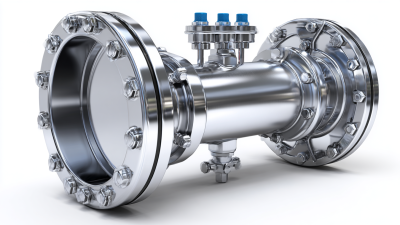In recent years, the phenomenon of the floating ball has captivated both scientific inquiry and recreational play, becoming a focal point in various fields including physics, engineering, and leisure industries.
 According to a report by the American Physical Society, the principles of levitation and fluid dynamics underpinning floating balls have led to innovative applications ranging from educational tools to sports equipment. The use of floating balls in play not only enhances physical engagement but also stimulates cognitive development, as highlighted in a study published in the Journal of Play. With the global toys and games market projected to reach $120 billion by 2023, the integration of floating ball technologies promises not only to enrich the play experience but also to push the boundaries of traditional gaming and learning methods. This exploration into the science of floating balls reveals not just their playful capabilities but also their potential for educational and developmental advancements in various contexts.
According to a report by the American Physical Society, the principles of levitation and fluid dynamics underpinning floating balls have led to innovative applications ranging from educational tools to sports equipment. The use of floating balls in play not only enhances physical engagement but also stimulates cognitive development, as highlighted in a study published in the Journal of Play. With the global toys and games market projected to reach $120 billion by 2023, the integration of floating ball technologies promises not only to enrich the play experience but also to push the boundaries of traditional gaming and learning methods. This exploration into the science of floating balls reveals not just their playful capabilities but also their potential for educational and developmental advancements in various contexts.
 Buoyancy is a fascinating physical principle that plays a crucial role in understanding why certain objects, like floating balls, can defy gravity. This phenomenon occurs when an object is placed in a fluid and experiences an upward force equal to the weight of the fluid it displaces. According to Archimedes' principle, this upward force enables the ball to float, as long as its density is less than that of the fluid in which it resides. For instance, a typical beach ball, filled with air, can float on water due to its lower density compared to the surrounding liquid, allowing it to stay buoyant and stable.
Buoyancy is a fascinating physical principle that plays a crucial role in understanding why certain objects, like floating balls, can defy gravity. This phenomenon occurs when an object is placed in a fluid and experiences an upward force equal to the weight of the fluid it displaces. According to Archimedes' principle, this upward force enables the ball to float, as long as its density is less than that of the fluid in which it resides. For instance, a typical beach ball, filled with air, can float on water due to its lower density compared to the surrounding liquid, allowing it to stay buoyant and stable.
In playful applications, floating balls are seen in various environments, from swimming pools to outdoor games. A report by the National Association of Amusement Parks and Attractions indicates that activities involving buoyant objects are popular among families, contributing to over 25% of recreational water use. Engaging in water-based games not only provides entertainment but also fosters physical activity and enjoyment in young children.
Tips for Experimenting with Buoyancy:
Floating balls are captivating objects that illustrate intriguing scientific principles. One of the key concepts is buoyancy, which explains how objects can float in a fluid. According to Archimedes' principle, an object will float if the weight of the fluid it displaces is equal to or greater than its own weight. This principle is critical in understanding why some balls can remain suspended on the surface of water or air.
Another vital principle is air pressure, particularly in the context of hovercraft and aerodynamic designs. The Bernoulli effect indicates that as the speed of a fluid increases, its pressure decreases. This allows floating balls, such as those used in air hockey, to glide effortlessly over a surface when air is forced beneath them. Additionally, the concept of surface tension plays a role; small balls can float on water due to the adhesive properties of the liquid molecules at the surface, creating a tension strong enough to support their weight. These scientific principles not only enhance our understanding of physics but also open up playful applications in toys and games that utilize the magic of floating objects.
Innovative uses of floating balls in modern playgrounds have transformed the way children interact with play environments. These vibrant spheres not only provide fun but also enhance physical activity and coordination. Floating balls can be found in various forms, from interactive splash pads to water-based playgrounds, where children can hop, skip, and jump through a watery landscape. Their buoyant nature encourages creative play, allowing kids to indulge in imaginative scenarios as they navigate their way through these engaging spaces.
In addition to traditional playgrounds, indoor water parks have embraced the use of floating balls to elevate the experience for visitors of all ages. Features like wave pools and slides incorporate these floating elements, promoting active participation and teamwork among children. The incorporation of floating balls facilitates thrilling games and challenges, fostering social interaction as young adventurers collaborate to keep the balls afloat or engage in friendly competitions. The playful applications of floating balls not only enrich the physical play space but also ensure that children are consistently active, making playtime a delightful blend of exercise and enjoyment.
When it comes to enjoying the great outdoors, floating ball games offer a delightful way for both kids and adults to engage in playful activities. Whether at the beach, pool, or lake, these games can spark joy and laughter among participants of all ages. Examples include beach volleyball with inflatable balls, or a relaxing game of water paddle ball that is perfect for warm summer afternoons. These interactive games not only promote physical fitness but also encourage teamwork and social interaction.
Tips for Enjoying Floating Ball Games:
1. Choose the Right Environment: Ensure you have ample space and a safe area to play, whether it’s on the sand or in shallow water. The right location enhances the fun and keeps everyone engaged.
2. Incorporate Team Play: For larger groups, divide into teams to foster friendly competition. This addition creates a more exciting atmosphere and helps everyone feel included.
3. Bring Along Extras: Pack additional supplies like mini goals or floating targets to elevate the game experience. These can provide new challenges and keep the activities fresh.
By embracing the spirit of floating ball games, families can create lasting memories while enjoying the sun and water together.

The future of floating ball technology holds exciting possibilities for sports and recreation. Innovations in materials and design are enabling the creation of lightweight, buoyant balls that can transform traditional games. Imagine soccer balls that can hover just above the ground, allowing players to dribble and pass in ways previously thought impossible. These advancements not only enhance gameplay but also encourage a new generation of athletes to engage in sports in a more dynamic manner.
Tips for integrating floating ball technology into play include experimenting with different surface materials to maximize buoyancy and control. Additionally, incorporating elements such as sensors or feedback mechanisms can provide players with instant data on their performance, enhancing their skills more effectively. This blending of physical activity with technology paves the way for immersive experiences, creating an engaging environment for enthusiasts of all ages.
As floating ball technology continues to develop, potential applications extend beyond conventional sports. Think of floating balls used in recreational activities like beach games or water sports, where achieving new levels of interaction and fun can captivate participants. Adapting these technologies for various environments opens doors to more inclusive and accessible recreation options for everyone, redefining how we play and enjoy our free time.





© Shipham Valves 2025. All Rights Reserved.
Website By PS Website Design Ltd
Request a Quote/Further Information
Download
We use cookies on this website, by continuing to browse the site you are agreeing to our use of cookies. Find out more.